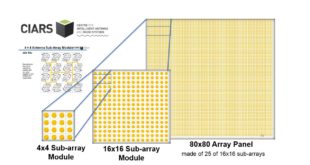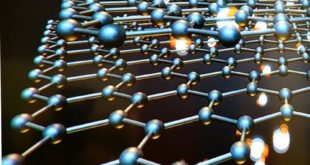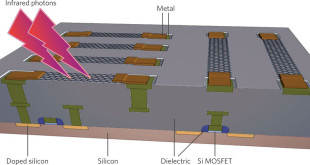The wearing of body armour provide troops an unparalleled advantage on the battlefield, improving survivability and reducing casualtiesis. It has also been very effective in reducing injuries and fatalities within the police force and correctional services. This protection comes at a price, however. U.S. ground troops today carry an …
Read More »Monthly Archives: July 2022
Satellite On-board connectivity through beam switching and scanning
High-throughput Satellite or HTS systems represent a new generation of satellite communications systems, that provide a significant increase in capacity than conventional communication satellites. They utilize frequency reuse and multiple spot beams to deliver vast throughput for the same amount of allocated orbital spectrum. The increase in capacity typically ranges from 2 …
Read More »Digital Signal Processing (DSP) algorithms and Digital Signal Processors
Digital Signal Processors (DSP) take real-world signals like voice, audio, video, temperature, pressure, or position that have been digitized and then mathematically manipulate them. Signals need to be processed so that the information that they contain can be displayed, analyzed, or converted to another type of signal that may be …
Read More »New Space Satellite Communication Networks and terminals Test & Measurement challenges and solutions
Traditionally, the satellite industry has relied on geosynchronous earth orbit (GEO) satellites that take years to build and require very expensive launches to deliver them to orbit. Satellite networks using geosynchronous equatorial orbit (GEO) are effective at providing stationary coverage to a specific area, however, Latency issues due to the …
Read More »Model-Based Systems Engineering (MBSE) for Satellites and Aerospace
A system is defined by NASA as a construct or collection of different elements that together produce results not obtainable by the elements alone. Systems Engineering (SE) is defined as: The process by which a customer’s needs are satisfied through the conceptualization, design, modeling, testing, implementation, and operation of a …
Read More »Agile Engineering is the Future of Aerospace Design and Production
In the middle of the 1990s, the common way of developing software was a heavyweight software development methodology, comprising of complete requirements documentation of design and architecture, followed by coding, integration, and finally testing based on a detailed test plan before an application was deemed production-ready. This traditional and sequential life …
Read More »Phased Array Antennas for LEO satellite Constellation Ground Station
Satellite communication systems consist of two main segments, the space segment and the earth or ground station. The ground station system coordinates the communication process with satellites in space. A communications satellite is an artificial satellite that relays and amplifies radio telecommunications signals via a transponder; it creates a communication …
Read More »Human/machine hybrids or cyborgs evolving to biocyborgs
The synthetic biology is an engineering approach to biology. The aim is to re-design of existing, natural biological systems for useful purposes as well as design and construction of new biological parts, devices, and systems. An Organism’s sensing, metabolic, and decision-making capabilities are all encoded within their genome as …
Read More »Graphene nanoribbons
Graphene is a 1-atom-thick layer of tightly bonded carbon atoms arranged in a hexagonal lattice. Graphene the world’s first 2D nanomaterial, is widely regarded as the “wonder material” of the 21st century due to the combination of its extraordinary properties. As a single layer of graphite, it is the thinnest …
Read More »Graphene infrared (IR) photodetectors enable ultrafast and room temperature IR cameras ultrasensitive for entire spectrum, and 3D cameras
Photodetectors, also called photosensors, are sensors of light or other electromagnetic radiation. There is a wide variety of photodetectors that may be classified by mechanism of detection, such as photoelectric or photochemical effects, or by various performance metrics, such as spectral response. Photodetectors are devices that measure photon flux or …
Read More » International Defense Security & Technology Your trusted Source for News, Research and Analysis
International Defense Security & Technology Your trusted Source for News, Research and Analysis



